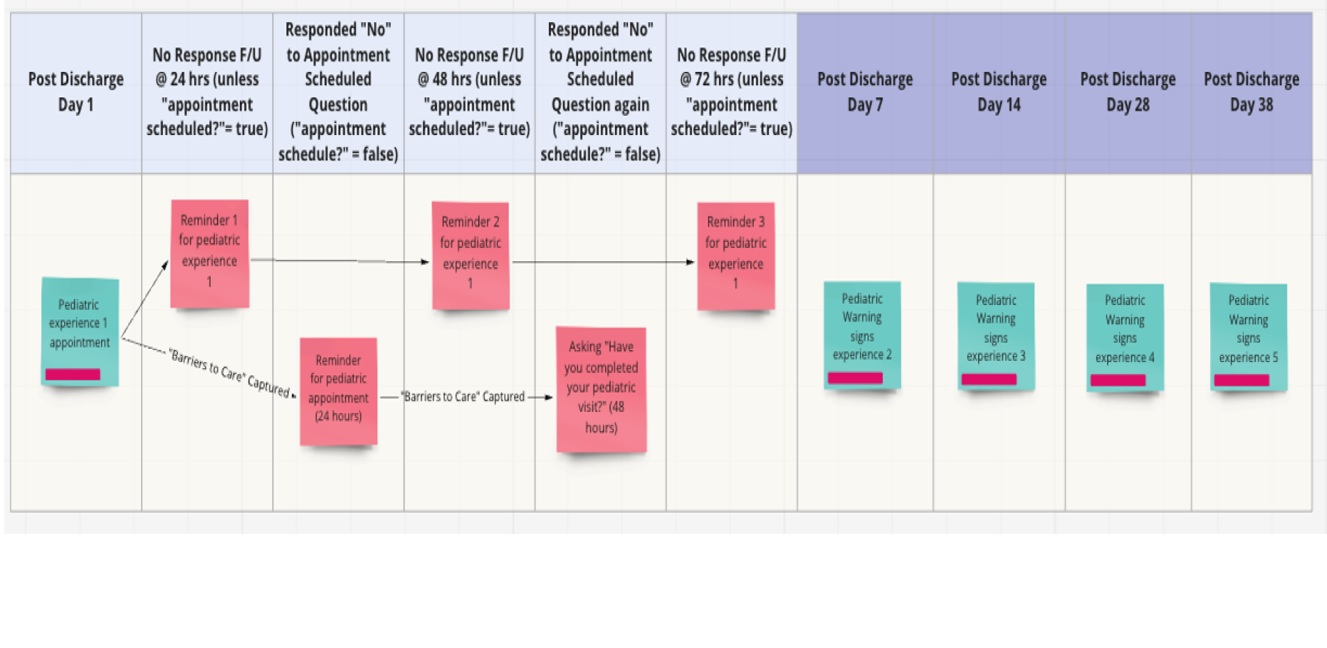Health Services Research
HSR 4: National or Novel
606 - Development of a Tailored Chatbot to Provide Timely Newborn Information
Publication Number: 606.32
.jpg)
Karen Ganacias, MD, MPH
Fellow
Medstar Georgetown University Hospital
Washington, District of Columbia, United States
Presenting Author(s)
Background:
While infant mortality rates vary across the country, the District of Columbia has some of the highest infant mortality rates in the United States, with disparities by race and place.1, 2 Prompt access to newborn follow-up and timely newborn information from reliable sources are proposed strategies to decrease risk of adverse events. 3
Digital technologies have been developed to help provide timely health information and outreach to underserved populations.4 One useful digital tool developed has been chatbots, which allow for complex dialog management and interactivity.5
To decrease risk and improve access to follow up care, a chatbot was created to follow with birthing individuals discharged from an urban hospital in the mid-Atlantic.
Objective: The goal of this study was to design a pediatric algorithm within this chatbot to aid in providing newborn education and overcoming barriers to timely newborn care.
Design/Methods:
A responsive algorithm at five pre-designated time intervals was developed with three areas of focus: 1) Knowledge of newborn warning signs to seek urgent care, 2) Facilitation of timely newborn visits with a local primary care provider, and 3) Provision of trusted resources about nutrition, development, and infant wellness. The language was written in a conversational style.
Results:
The algorithm was designed to have five engagements over the course of six weeks (see Figure 1). Content was adapted from the websites of the AAPs’ healthychildren.org website, as well the National Institute of Child Health and Human Development's SafeToSleep website. Logic on newborn follow up visit was designed as both a reminder and to address barriers to linkages: Twenty-four hours after discharge from the hospital, caregivers are asked if they have made a newborn visit. If caregivers’ answered ‘no,’ to a newborn visit, the automated response enquires about specific barriers with resources provided.
Between the chatbot’s launch on Aug. 30, 2022 until Nov. 14, 2022, out of 718 who received messages (with only 2% opting out), 339 (47%) engaged with at least some messaging. Of the 168 who answered the question about pediatric appointments, 39% said they had not yet scheduled an appointment at 24 hours post-discharge.
Conclusion(s):
This study showed high engagement and highlights gaps in timely pediatric follow-up. Future research will investigate acceptability and effectiveness, as well as the potential for this platform to improve access and decrease disparities in newborn outcomes.
